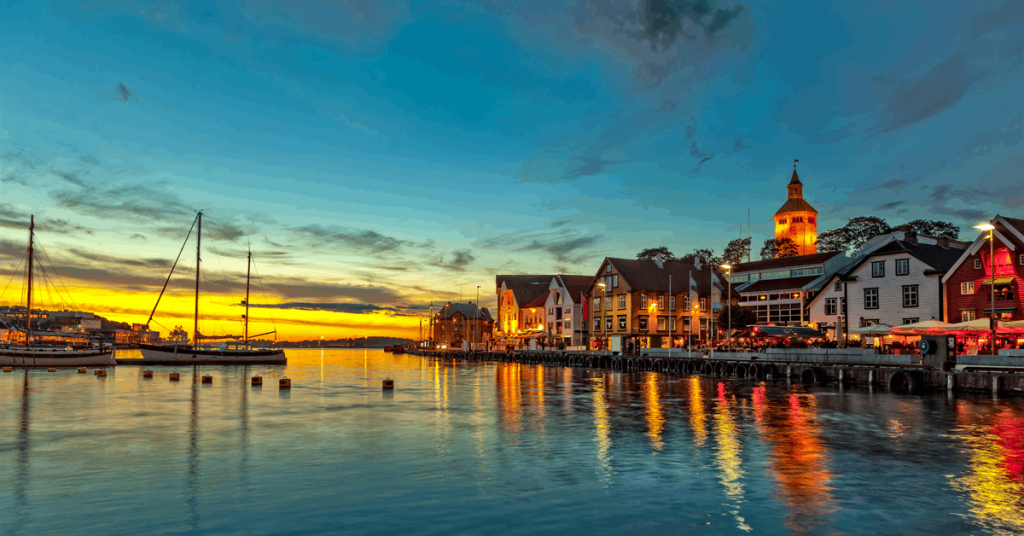Aker BP ASA on Thursday announced an oil discovery with an estimated recoverable volume of 96-134 million barrels of oil equivalent (MMboe) in the Yggdrasil area on Norway’s side of the North Sea.
“Omega Alfa is among the largest commercial discoveries in Norway in a decade”, Aker BP chief executive Karl Johnny Hersvik said in a statement issued by the Fornebu-based company. “Building on the momentum from the oil discovery at East Frigg in 2023, it marks a major step toward our ambition of producing more than one billion barrels from the Yggdrasil area”.
The Omega Alfa campaign targeted five structures – Omega, Alfa, Alfa South, Sigma NE and Pi – through a multilateral well on the western side of Yggdrasil. In July Aker BP reported a discovery of 20-40 MMboe from two of the structures. After the completion of the campaign the combined recoverable volumes have now increased to 96-134 MMboe.
Over three months, Odfjell Drilling Ltd.’s semi-submersible Deepsea Stavanger drilled 45,000 meters (147,637.8 feet), including 40,000 meters in reservoir sections. “This included the three longest well branches ever drilled on the Norwegian continental shelf, with the longest branch reaching 10,666 meters”, Aker BP said.
“The horizontal drilling method enabled the collection of an unprecedented amount of high-quality reservoir data. This has significantly reduced subsurface uncertainty and allows us to rapidly advance into concept studies to determine the optimal tie-back solution to Yggdrasil”.
Yggdrasil, according to Aker BP, is the biggest hydrocarbon development underway on the Norwegian continental shelf. Yggdrasil, between Alvheim and Oseberg, has a proven resource base of around 700 MMboe, according to Aker BP.
Authorities approved the development plan 2023. Aker BP and its partners expect production to start 2027, with 55 wells planned.
Yggdrasil consists of the Fulla, Hugin and Munin licenses, all operated by Aker BP. In Fulla, Aker BP owns 40 percent, Norway’s state-owned Equinor holds 47.7 percent and Poland’s state-owned ORLEN SA has 12.3 percent through ORLEN Upstream Norway AS. In Hugin, Aker BP owns 87.7 percent and ORLEN 12.3 percent. Munin is a 50-50 venture between Aker BP and Equinor.
The development plan, as shared on Aker BP’s website, includes a processing platform with a well area and living quarters, Hugin A. Hugin A is planned to be minimally manned.
An unmanned production platform, Munin, would be installed on the northern side of Yggdrasil. Hugin A would provide services including oil stabilization and produced water treatment to Munin, as well as deliver water for injection to subsea production facilities.
A normally unmanned wellhead platform, Hugin B, would serve the redeveloped Froy field, started up 1995 but shut down 2001 according to information on government website Norskpetroleum.no. Hugin B would be tied back to Hugin A.
Yggdrasil’s subsea components would consist of nine templates, pipelines and umbilicals.
Natural gas would be exported through a shared pipeline from Hugin A via Munin to Statpipe and Karsto while oil would be exported through a shared pipeline from Hugin A to the Grane oil pipeline and Stureterminalen. Joint ventures have been formed with Equinor as operator for the export pipelines.
An integrated operations center and control room would be erected onshore Stavanger.
Yggdrasil would be powered from shore to minimize emissions.
To contact the author, email jov.onsat@rigzone.com
What do you think? We’d love to hear from you, join the conversation on the
Rigzone Energy Network.
The Rigzone Energy Network is a new social experience created for you and all energy professionals to Speak Up about our industry, share knowledge, connect with peers and industry insiders and engage in a professional community that will empower your career in energy.
element
var scriptTag = document.createElement(‘script’);
scriptTag.src = url;
scriptTag.async = true;
scriptTag.onload = implementationCode;
scriptTag.onreadystatechange = implementationCode;
location.appendChild(scriptTag);
};
var div = document.getElementById(‘rigzonelogo’);
div.innerHTML += ” +
‘‘ +
”;
var initJobSearch = function () {
//console.log(“call back”);
}
var addMetaPixel = function () {
if (-1 > -1 || -1 > -1) {
/*Meta Pixel Code*/
!function(f,b,e,v,n,t,s)
{if(f.fbq)return;n=f.fbq=function(){n.callMethod?
n.callMethod.apply(n,arguments):n.queue.push(arguments)};
if(!f._fbq)f._fbq=n;n.push=n;n.loaded=!0;n.version=’2.0′;
n.queue=[];t=b.createElement(e);t.async=!0;
t.src=v;s=b.getElementsByTagName(e)[0];
s.parentNode.insertBefore(t,s)}(window, document,’script’,
‘https://connect.facebook.net/en_US/fbevents.js’);
fbq(‘init’, ‘1517407191885185’);
fbq(‘track’, ‘PageView’);
/*End Meta Pixel Code*/
} else if (0 > -1 && 85 > -1)
{
/*Meta Pixel Code*/
!function(f,b,e,v,n,t,s)
{if(f.fbq)return;n=f.fbq=function(){n.callMethod?
n.callMethod.apply(n,arguments):n.queue.push(arguments)};
if(!f._fbq)f._fbq=n;n.push=n;n.loaded=!0;n.version=’2.0′;
n.queue=[];t=b.createElement(e);t.async=!0;
t.src=v;s=b.getElementsByTagName(e)[0];
s.parentNode.insertBefore(t,s)}(window, document,’script’,
‘https://connect.facebook.net/en_US/fbevents.js’);
fbq(‘init’, ‘1517407191885185’);
fbq(‘track’, ‘PageView’);
/*End Meta Pixel Code*/
}
}
// function gtmFunctionForLayout()
// {
//loadJS(“https://www.googletagmanager.com/gtag/js?id=G-K6ZDLWV6VX”, initJobSearch, document.body);
//}
// window.onload = (e => {
// setTimeout(
// function () {
// document.addEventListener(“DOMContentLoaded”, function () {
// // Select all anchor elements with class ‘ui-tabs-anchor’
// const anchors = document.querySelectorAll(‘a .ui-tabs-anchor’);
// // Loop through each anchor and remove the role attribute if it is set to “presentation”
// anchors.forEach(anchor => {
// if (anchor.getAttribute(‘role’) === ‘presentation’) {
// anchor.removeAttribute(‘role’);
// }
// });
// });
// }
// , 200);
//});

